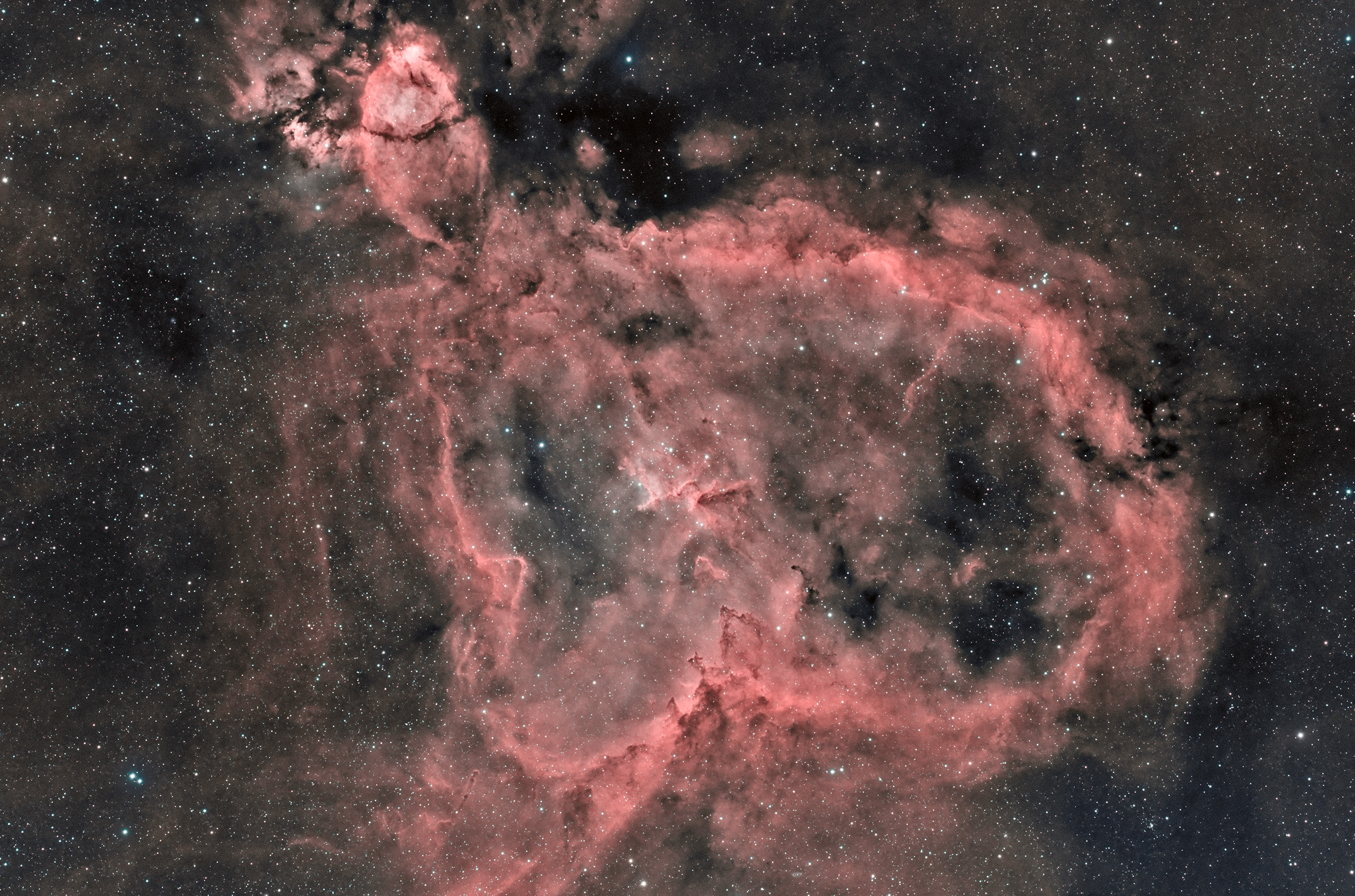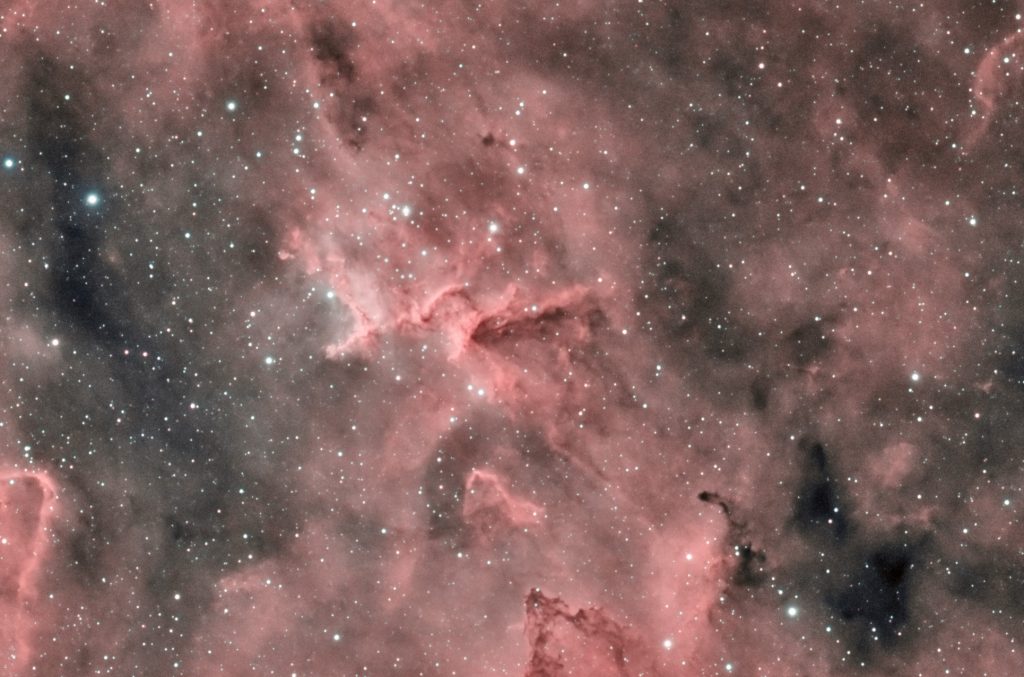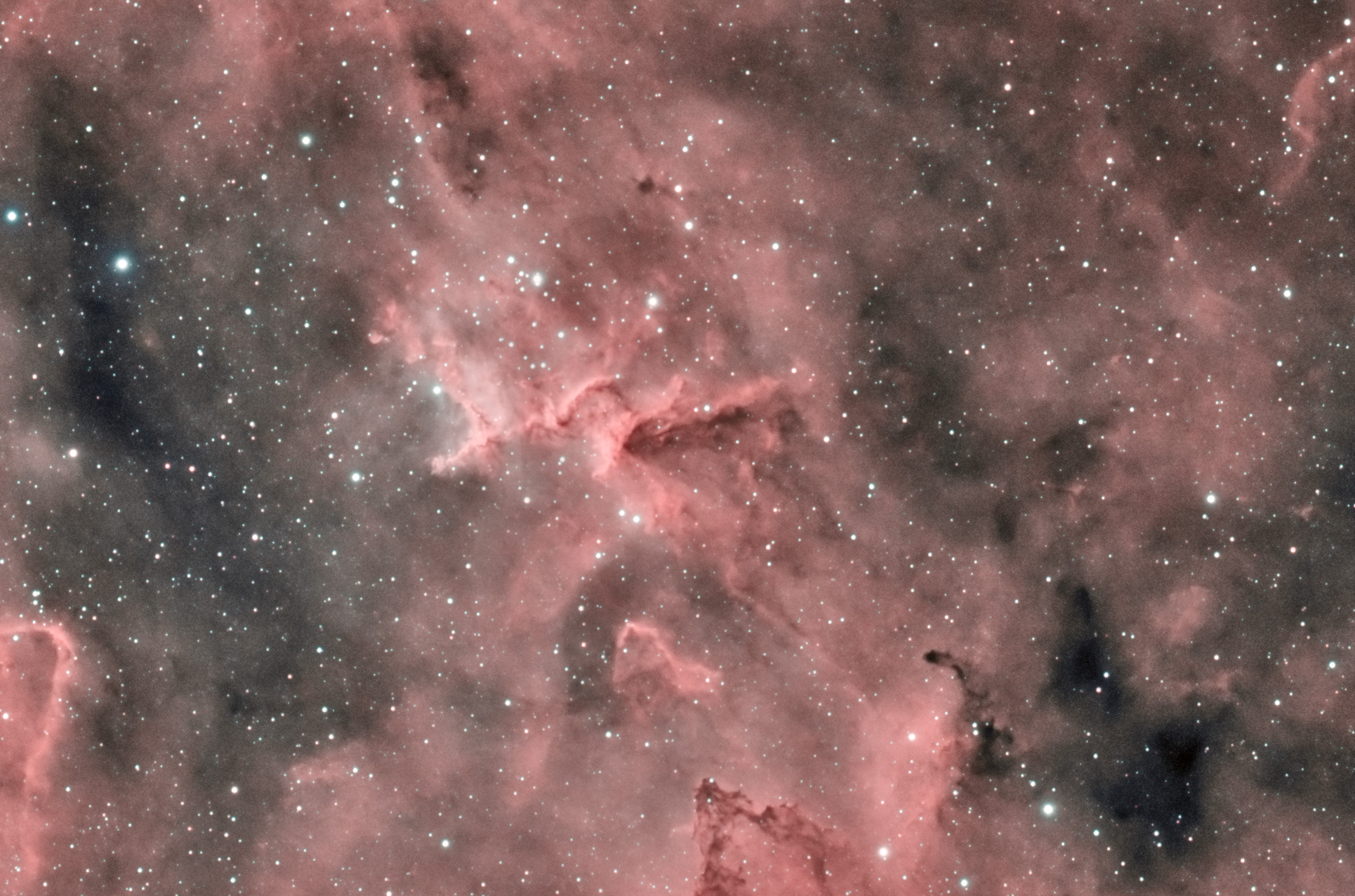This image of IC1805 – The Heart Nebula, in the constellation of Cassiopeia, shows what can be done when the Moon is very bright. Generally speaking, it is not easy to image faint deep-sky objects when the Moon is around, but it is possible to be productive by using narrowband filters. It’s not a great idea if the full Moon is also very close to the target, but as long as the Moon is 40 or more degrees away I find I can get reasonable results.
I explained a bit more about the dual-band narrowband filter I have been using with my one-shot colour CMOS camera in this post.
This image is composed of 48, 10 minute exposures over two nights last week. About two-thirds of them were during the night of the full Moon, the rest under an 85% Moon and drifting thin clouds.
As usual, click on the image to see the full-sized version.

The Heart Nebula is an emission nebula about 7,500 light years away. The great astronomer William Herschel discovered this nebula in 1787. Glowing in the light of ionised Hydrogen gas, the signal is strong in the H-Alpha part of the spectrum. The OIII signal is much weaker and since the H-Alpha is mapped to the red channel, the colour is predominately red.
There is a cluster of stars at the centre known as Mellotte 15 and this is shown as a crop from the main image below.

